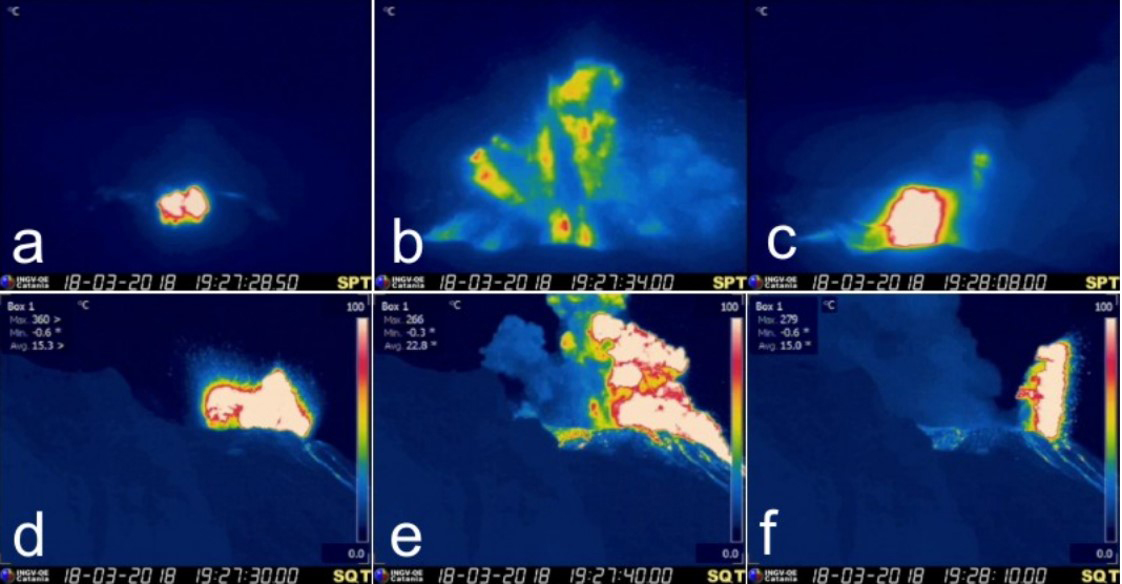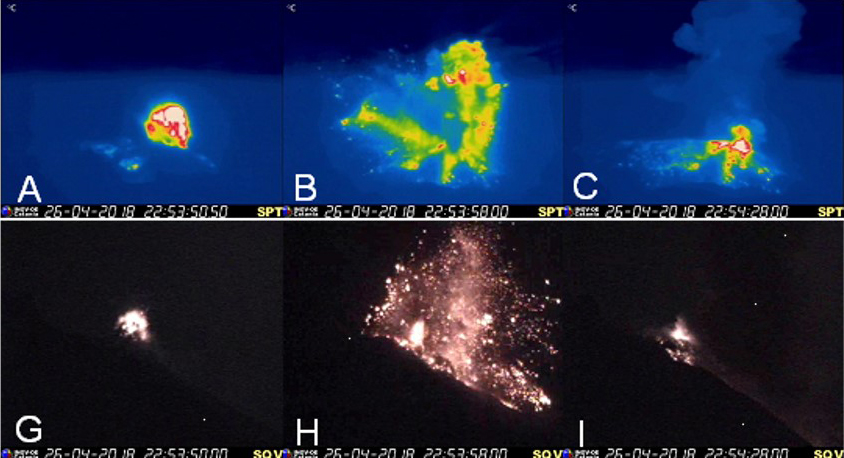Report on Stromboli (Italy) — August 2018
Bulletin of the Global Volcanism Network, vol. 43, no. 8 (August 2018)
Managing Editor: Edward Venzke.
Edited by Janine B. Krippner.
Stromboli (Italy) Continued Strombolian activity from five active summit vents through March-June 2018
Please cite this report as:
Global Volcanism Program, 2018. Report on Stromboli (Italy) (Krippner, J.B., and Venzke, E., eds.). Bulletin of the Global Volcanism Network, 43:8. Smithsonian Institution. https://doi.org/10.5479/si.GVP.BGVN201808-211040
Stromboli
Italy
38.789°N, 15.213°E; summit elev. 924 m
All times are local (unless otherwise noted)
Stromboli is a persistently active volcano in the Aeolian Islands, Italy, with confirmed historical eruptions going back over about 2,000 years. The active summit craters on the crater terrace are situated above the Sciara del Fuoco, a steep talus slope on the NW side of the island that leads to the Tyrrhenian Sea below. The NE crater (Area N) includes the active N1 and N2 vents, while the Central and SW craters (Area CS) contains the C, S1, and S2 vents (figures 125 and 126).
Typical activity comprises degassing and multiple explosions per hour that range from tens of seconds to a few minutes, known as Strombolian activity, which is named after this particular volcano (figure 127). The activity usually consists of low-intensity explosions that eject material (ash, lapilli, and blocks) up to 80 m above the crater and medium-low intensity explosions that eject material up to 120 m above the crater. This report describes the activity at Stromboli through March to June 2018 and summarizes reports published by the Istituto Nazionale di Geofisica e Vulcanologia (INGV).
Characteristic Strombolian activity occurred throughout March, typically consisting of 5-11 events per hour that ejected material up to 120 m above the craters. High-energy explosive events occurred on 7 and 18 March, both lasting around 40 seconds and ejecting material to a height of 400 m (figures 128 and 129).
Typical Strombolian activity continued through April with 6-12 explosive events per hour, with two high-energy explosive events on 24 and 26 April that lasted nine and three minutes, respectively. Both events ejected material across the Sciara del Fuoco, producing ash plumes and lava fountaining (figure 130). Low to medium-low intensity activity continued through May and June, with explosions per hour in the range of 3-15 and 6-13, respectively.
Geological Summary. Spectacular incandescent nighttime explosions at Stromboli have long attracted visitors to the "Lighthouse of the Mediterranean" in the NE Aeolian Islands. This volcano has lent its name to the frequent mild explosive activity that has characterized its eruptions throughout much of historical time. The small island is the emergent summit of a volcano that grew in two main eruptive cycles, the last of which formed the western portion of the island. The Neostromboli eruptive period took place between about 13,000 and 5,000 years ago. The active summit vents are located at the head of the Sciara del Fuoco, a prominent scarp that formed about 5,000 years ago due to a series of slope failures which extends to below sea level. The modern volcano has been constructed within this scarp, which funnels pyroclastic ejecta and lava flows to the NW. Essentially continuous mild Strombolian explosions, sometimes accompanied by lava flows, have been recorded for more than a millennium.
Information Contacts: Istituto Nazionale di Geofisica e Vulcanologia (INGV), Sezione di Catania, Piazza Roma 2, 95123 Catania, Italy (URL: http://www.ct.ingv.it/en/); Blog INGVvulcani, Istituto Nazionale di Geofisica e Vulcanologia (INGV) (URL: https://ingvvulcani.wordpress.com/2018/07/16/stromboli-e-le-sue-esplosioni/); Sentinel Hub Playground (URL: https://www.sentinel-hub.com/explore/sentinel-playground).







